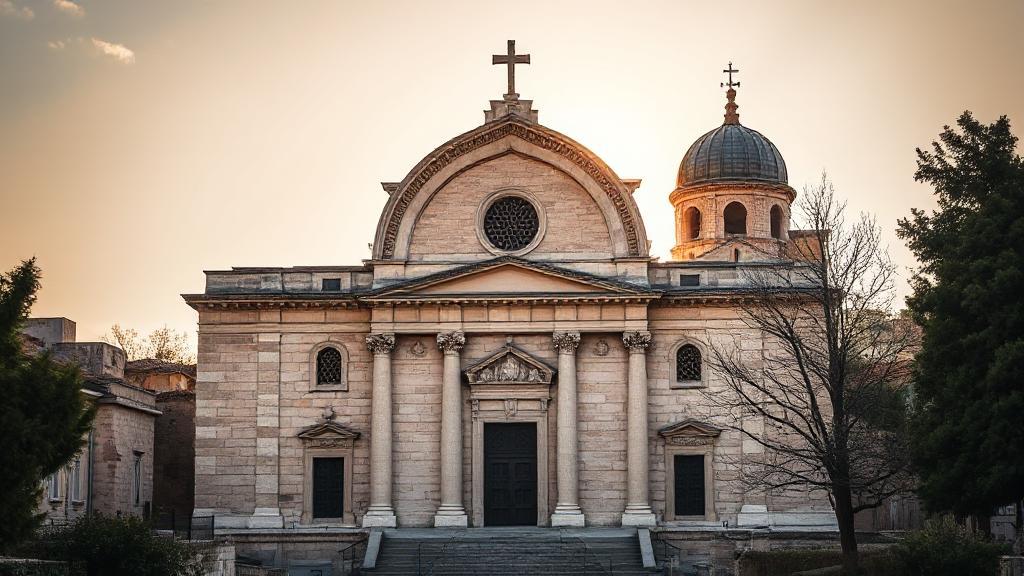Introduction
The location of Jesus' tomb has been a subject of fascination and debate for centuries, intertwining historical inquiry with religious tradition. This intersection of faith, history, and archaeology continues to captivate believers and researchers alike, leading to ongoing discussions about the precise location of Jesus' burial site in Jerusalem.
Traditional Sites
The Church of the Holy Sepulchre
The Church of the Holy Sepulchre stands as the most widely accepted location of Jesus' tomb. Located in the Christian Quarter of Jerusalem's Old City, this site has been venerated since the 4th century when Emperor Constantine's mother, Helena, identified it as the burial place of Jesus.
Archaeological evidence supports the claim that this area was a Jewish cemetery during Jesus' time:
- The site was outside Jerusalem's walls during Jesus' time
- It contained a limestone quarry and tombs from the Second Temple period
- Excavations have revealed tombs dating back to the 1st century
- Recent scientific analysis of mortar between the original limestone and marble cladding dates to around 345 CE
The Garden Tomb
The Garden Tomb, discovered in the 19th century, represents an alternative site favored by some Protestant groups. Located north of Jerusalem's Damascus Gate, this peaceful garden setting features:
- A rock-cut tomb from the First Temple period
- A nearby ancient winepress
- A skull-shaped cliff face (potentially relating to "Golgotha")
However, many scholars argue that the Garden Tomb lacks historical evidence and is more of a symbolic representation, as archaeological evidence suggests this tomb predates Jesus' time by several centuries.
Historical Context
First-Century Jewish Burial Practices
Traditional Two-Stage Burial Process:
These practices align with Gospel accounts of Jesus' burial in a "new tomb hewn in rock."
"The archaeological evidence from the Second Temple period shows that wealthy citizens often had family tombs carved into the bedrock outside the city walls." - Israel Antiquities Authority
Modern Investigation Methods
Contemporary researchers employ various techniques to study potential tomb sites:
- Ground-penetrating radar
- Carbon dating
- Architectural analysis
- Comparative archaeology
- Digital modeling
Alternative Theories
The Talpiot Tomb, discovered in 1980 in the Talpiot neighborhood of Jerusalem, represents another proposed location. The tomb contains several ossuaries, including one with the inscription "Jesus, son of Joseph." However, this claim remains disputed due to insufficient conclusive evidence.
Religious Perspectives
Christian Views
Different Christian denominations approach the tomb's location differently:
- Orthodox and Catholic traditions strongly favor the Holy Sepulchre
- Protestant groups are often more open to alternative sites
- Some emphasize spiritual significance over physical location
For Christians, the tomb represents the triumph over death and is a cornerstone of faith, with both major sites attracting millions of pilgrims annually.
Other Religious Perspectives
- Jewish Perspective: Judaism does not recognize Jesus as the Messiah, and thus the location of his tomb is not a focal point of religious significance.
- Islamic Perspective: In Islam, Jesus (Isa) is considered a prophet, and his ascension to heaven is emphasized over his burial. The Quran does not specify the location of his tomb.
Archaeological Challenges
Several factors complicate the definitive identification of Jesus' tomb:
- Jerusalem's multiple destructions and reconstructions
- Limited archaeological access due to religious structures
- Continuous occupation and urban development
- Political and religious sensitivities
For further research, explore resources such as the Biblical Archaeology Society, the Israel Antiquities Authority, and the Bible Gateway.
